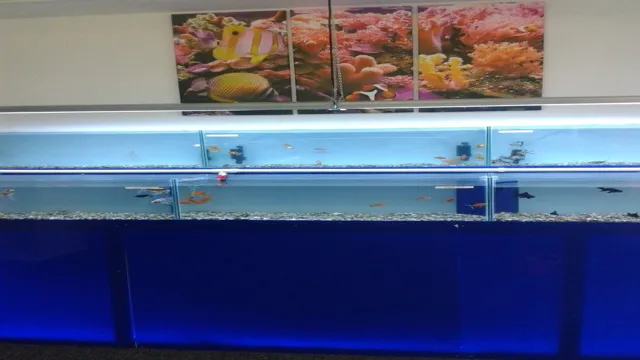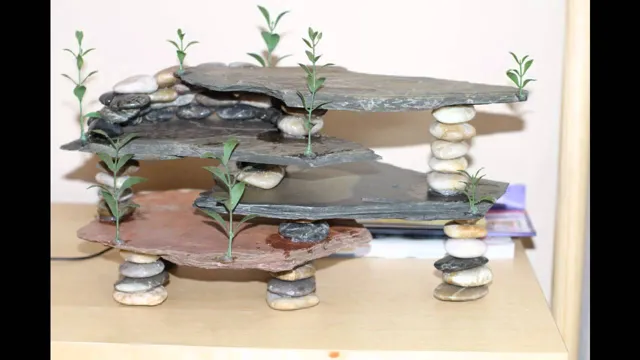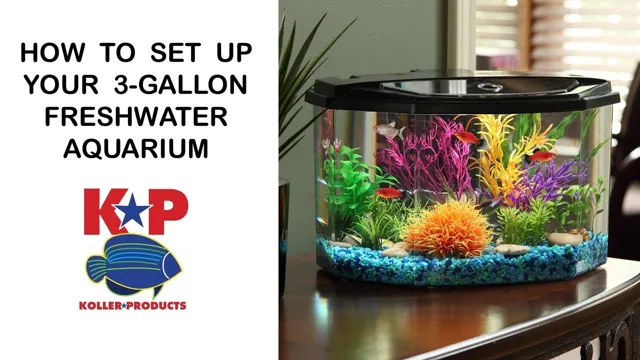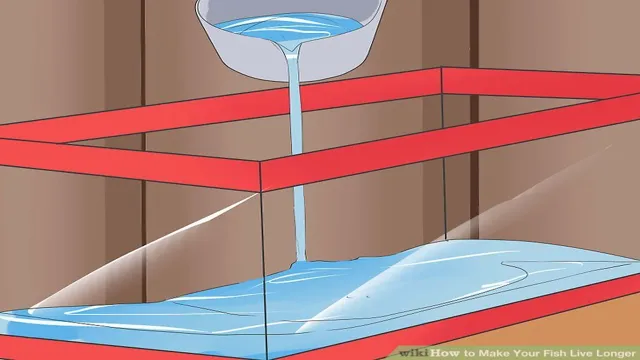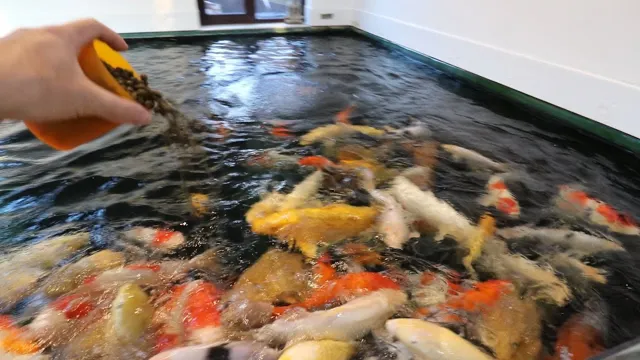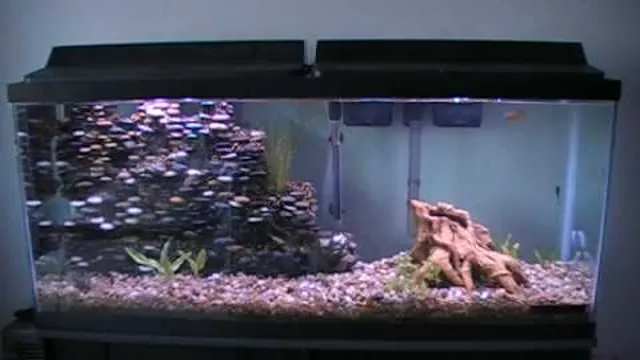Maintaining a clean and healthy environment for your aquarium’s inhabitants is essential to ensure their well-being and longevity. One of the critical components of this maintenance routine is maintaining your canister filter. But how often should you change it? The answer is not as simple as you might think, as several factors influence the frequency of filter changes.
In this blog, we’ll explore the factors that determine how often you should change your cannister aquarium filter, so you can keep your aquarium pristine and your fish happy and healthy. So, let’s dive in, shall we?
Understanding Cannister Filters
Cannister filters are highly effective in keeping aquariums clean and healthy for your aquatic friends. One of the most commonly asked questions is how often you need to change a cannister aquarium filter. The answer varies depending on the type of filter media you use, the size of your aquarium, and how many fish you have.
Generally, it is recommended to change your filter media every 4-6 weeks. However, if you have a heavily stocked aquarium, you may need to replace it more frequently. It’s important to check the filter’s efficiency regularly by monitoring the water parameters.
If your water is becoming cloudy or the quality is decreasing, it may be time to change your filter media. Remember, maintaining your filter regularly contributes to the overall health and well-being of your aquatic pets. So, stay on top of your routine maintenance to ensure a thriving aquarium ecosystem.
What is a Cannister Filter?
A cannister filter is an aquarium filtration system designed to mechanically and biologically clean fish tanks. These filters are usually cylindrical in shape and contain trays with layers of filter media, such as foam pads, activated carbon, and ceramic rings. The process of water filtration starts when water is sucked out of the aquarium into the cannister filter, usually through a pump.
The water moves through the filter media as it passes through various trays and chambers. Cannister filters provide a more thorough filtration process than other types of filters, as they can remove much smaller particles and even harmful chemicals. They are particularly useful for larger aquariums with a greater volume of water, and can be easily installed in aquarium stands or placed directly under the aquarium.
Overall, a cannister filter is an essential piece of equipment for maintaining a healthy and clear aquarium environment for your fish.

Why are Cannister Filters Important?
Cannister filters are an integral part of any aquarium setup. They are a type of mechanical filtration system that uses a canister filled with filter media to remove debris, waste, and other contaminants from the water. These filters have the advantage of being able to remove particles both large and small, making them more effective than other types of filters.
The process begins when water is drawn into the canister filter through an intake pipe. The water is then passed through a series of filter media, which trap and remove particles such as uneaten food, fish waste, debris, and other organic matter. Once the water has passed through the filter media, it is returned to the aquarium, clean and free of contaminants.
One of the main benefits of using a cannister filter in your aquarium is that it can help maintain a healthy environment for your fish. By removing waste and other contaminants from the water, you can create a cleaner, more oxygen-rich environment that is conducive to fish health and growth. In addition to improving water quality, cannister filters can also help keep your aquarium looking its best by reducing cloudy water and maintaining a clean, clear appearance.
With so many benefits to using a cannister filter, it’s easy to see why they are such an important component of any aquarium setup. So if you’re looking to keep your fish healthy and your aquarium looking great, make sure to invest in a high-quality cannister filter today.
How Does a Cannister Filter Work?
Cannister filters are an essential piece of equipment for any aquarium owner. They work by pushing water through a series of filter media, which remove debris, waste, and other impurities from the water. This keeps your aquarium clean and healthy for your fish and other aquatic animals.
The filter media typically includes foam pads, which trap large particles, as well as bio-media, which contains beneficial bacteria that break down harmful substances in the water. Additionally, activated carbon is often included to absorb odors and discoloration. The cleaned water is then returned to the aquarium, creating a continuous cycle.
Cannister filters are extremely effective at maintaining water quality and are often preferred over other types of filters due to their high capacity and customizable media options. Overall, understanding how a cannister filter works is crucial to keeping your aquarium clean and your aquatic pets healthy.
Signs That Your Filter Needs Replacing
If you have a cannister aquarium filter, it is important to know how often you need to change it. One of the most obvious signs that your filter needs replacing is if the water in your tank starts to look cloudy. This could be a sign that there is a build-up of debris and waste in the filter that is not being properly removed.
Another sign that your filter needs replacing is if you notice an increase in algae growth in your tank. This could be due to a lack of filtration, which is not allowing the water to be properly oxygenated and circulated. Additionally, if you notice a decrease in the quality of your fish’s health, such as a loss of color or lack of energy, this could be a sign that your filter is not providing enough oxygen or filtering out harmful bacteria. (See Also: How to Make Aquarium Fish Net: A Step-by-Step Guide to Crafting the Perfect Tool)
In general, it is recommended to change your cannister aquarium filter every two to four weeks to ensure optimal water quality and the health of your fish.
Reduced Water Flow
If you’ve noticed that your water flow has reduced, it may be a sign that your filter needs replacing. A clogged filter can slow down water flow and reduce water pressure, which can be a real hassle. If you have recently changed your filter and still notice reduced water flow, it’s possible that the filter you installed wasn’t the correct one for your system.
Make sure you are purchasing the right filter for your specific system and do research on the best options to ensure top functionality. Another possible reason for reduced water flow could be that there is sediment or debris clogging the pipes leading to your filter, which can be quite common. In such cases, simply cleaning your pipes and housing should greatly improve your water pressure.
As a rule of thumb, it’s recommended to replace your filter every six months or so to ensure that it’s functioning properly. A clean and efficient filter will provide you with the best possible water quality and keep your water pressure flowing effectively.
Dirty or Cloudy Water
Dirty or cloudy water can be a cause for concern for anyone who wants to ensure their water supply is clean and safe. If you notice these signs, it may be time to replace your water filter. First and foremost, if your water looks dirty or cloudy, it is a clear sign that your filter is not doing its job properly.
Second, if you notice an unpleasant taste or odor coming from your tap water, it could be a sign that your filter is no longer working effectively. Third, if your water pressure is gradually decreasing, it could be due to a clog in your filter. Lastly, if you notice your faucet is leaking, it’s possible that the excessive wear and tear caused by a dirty filter has damaged your plumbing.
By recognizing these signs, you’ll be able to avoid potential health risks caused by dirty water and ensure your filter is effectively purifying your water supply. Don’t hesitate to replace your filter at the first sign of these issues to safeguard the quality of your drinking water.
Strange Noises
As a pet owner, you’re probably used to the different noises your furry friend makes. However, strange and unusual noises can be a sign that your filter needs replacing. One common sound is a gurgling or bubbling noise, which can indicate that air is trapped in the filter or that it’s clogged with debris.
Another indication that your filter needs replacing is when it starts to make a louder noise than usual. This could be due to worn-out parts or a motor that’s failing. A filter that emits a foul odor is also a sign that it needs to be replaced as it suggests that bacteria and other unwanted contaminants are thriving in your pet’s water.
Remember, a filter is essential in maintaining your pet’s health and ensuring their environment is clean and safe. So, if you notice any strange noises coming from your filter, it’s best to replace it as soon as possible.
Recommended Frequency for Changing Your Filter
As an aquarium owner, it is essential to know how often you need to change your cannister aquarium filter. The frequency of changing your filter depends on various factors such as the size of your aquarium, the number of fish you have, and the type of filter you are using. Generally, it is recommended to replace the filter every four to six weeks.
However, if you are noticing a decrease in your water quality or a lack of water flow in your aquarium, you may need to change it more frequently. It is essential to keep up with regular maintenance on your aquarium to ensure the health and well-being of your aquatic pets. A dirty filter can lead to harmful bacteria growth and even death in your fish.
So, remember to monitor your aquarium and change the filter according to your need.
Size of Aquarium Matters
As a general rule of thumb, the larger the aquarium, the less frequently you’ll need to change the filter. If you have a small tank, you may need to change the filter every week or so, but for a larger tank, you can typically get away with changing the filter once a month. Of course, there are a number of factors that can affect this, such as the number of fish you have in your tank, the type of filter you’re using, and how often you feed your fish.
But as a rough guideline, aim to change your filter every two to four weeks for most standard-sized aquariums. It’s important to remember that the filter is one of the most important components of any aquarium, as it helps keep the water clean and clear by removing harmful pollutants and bacteria. Without a proper filter, your fish could become sick or even die from poor water quality.
That’s why it’s crucial to stay on top of your filter maintenance and ensure you’re changing it frequently enough based on the size of your tank. In addition to changing the filter, it’s also a good idea to rinse it out with tap water every few weeks to remove any debris that has accumulated inside. You should also replace the filter media (such as the carbon) every few months to ensure it’s still effective at removing pollutants. (See Also: How to Build a Large Acrylic Aquarium: Tips and Tricks)
Remember, the health and well-being of your fish depend on a clean and healthy aquatic environment. By following these guidelines for changing your filter, you can help ensure your fish stay happy and healthy for years to come.
Fish and Plant Species Matters
When it comes to keeping fish and plants healthy in your aquarium, the species you choose can impact the frequency of filter changes you’ll need to perform. For example, fish that produce a lot of waste, like goldfish, require more frequent filter changes than smaller, less active fish. Similarly, plants that shed a lot of leaves and other debris will also increase the need for more frequent filter changes.
In general, it’s a good idea to check your filter at least once a week to determine if it needs to be cleaned or changed. However, if you have a high-maintenance aquarium, you may need to perform this task more often. Keeping up with filter changes will not only help your fish and plants thrive, but it will also maintain a healthy environment for them to live in.
So, don’t neglect this important aspect of aquarium care – your aquatic pets will thank you!
Recommended Frequency Chart
Changing your air filter at the right time is incredibly important for maintaining good indoor air quality and avoiding costly repairs. But when should you be changing your filter? Here is a recommended frequency chart to follow: For standard 1-3 inch filters, it is recommended to change them every 1-3 months. For thicker filters or those with higher MERV ratings, a longer lifespan of 6-12 months is common.
However, it’s important to keep in mind that usage and environmental factors such as pet dander, smoking, and construction can clog up filters faster, so it’s best to check your filter monthly to gauge its efficiency. By following this recommended frequency chart, you can ensure that you are breathing clean, fresh air while also maintaining optimal HVAC system performance. So, make a note on your calendar and keep up with this simple maintenance task to keep your home healthy and comfortable.
How to Change Your Cannister Filter
If you have an aquarium at home, you may know how crucial it is to maintain the water conditions for the health of your fish. One of the essential components in an aquarium is the cannister filter. This filter cleans the water by removing debris and impurities that can harm your aquatic pets.
A common question among aquarium owners is how often they need to change the cannister aquarium filter. The answer depends on many factors, such as the tank size, the number of fish, and the type of filter media used in the cannister. Generally, it is recommended to change the cartridge every 4-6 weeks and the media every 6-12 months.
However, these are just estimates, and you should check the filter regularly to see if it gets clogged or dirty, which might require more frequent replacements. Remember to also rinse the filter parts with aquarium water to avoid killing good bacteria that help keep the tank healthy. By taking care of your cannister filter, you are helping to create a clean and healthy environment for your fish to thrive.
Step-by-Step Guide
Changing your cannister filter may seem like a daunting task, but fear not! Here’s a step-by-step guide to make the process a breeze. First, turn off your aquarium lights and unplug all equipment near the filter. Next, remove the filter media (such as sponge, ceramic, or carbon) and rinse it with water to remove any debris.
Then, detach the filter from the aquarium and remove the old filter cartridge. Take this opportunity to clean the tubing and the cannister with a soft brush and sponge. Once everything is clean and dry, install the new filter cartridge and add the clean filter media.
Reattach the tubing and the cannister to the aquarium, plug in the equipment, and turn on the aquarium lights. Wait approximately 15 minutes before turning on the filter to allow the water to settle. And that’s it! Your aquarium now has a fresh, clean filter to keep your fish happy and healthy.
Remember to repeat this process every 1-3 months, depending on the manufacturer’s recommendations, to ensure your filter is functioning properly.
Tools Needed
If you have a cannister filter for your aquarium, it’s important to know how to change it properly to ensure the health and cleanliness of your aquatic pets. Here are the tools you’ll need: a new filter, bucket for waste water, gloves, and a filter brush. First, turn off the filter and disconnect it from the power outlet.
Place a bucket underneath the filter and detach the hoses from the filter head. Remove the filter lid and discard the old filter media. Rinse the filter canister and lid with aquarium water.
Install the new filter media and reassemble the filter canister. Reattach the hoses to the filter head and turn on the filter. After a few minutes, check for leaks and adjust as necessary. (See Also: How to Drop KH in Aquarium: Simple and Effective Methods Explained)
Remember to clean your filter once a month to maintain optimal water quality for your aquatic pets. By doing this, you’ll help keep the water healthy and free of debris or toxins that could harm your pets.
Maintenance Tips
If you’re wondering how to change your canister filter, don’t worry – it’s easier than you think! These filters are an essential part of any aquarium, as they help to keep the water clean and clear for your fish. To start, you’ll need to switch off the filter and unplug it from the power source. Next, remove the canister from the filter and open it up.
You’ll need to discard the old filter media and clean out the canister itself with warm water and a mild soap. Rinse thoroughly and let it dry completely before inserting new filter media and reassembling the canister. Finally, plug it back in and turn the filter back on.
It’s that simple! Remember to replace your filter media regularly to ensure the best performance from your canister filter, and to keep your aquarium healthy and happy.
Conclusion
As with many aspects of aquarium maintenance, the answer to how often you need to change a canister filter depends on a variety of factors unique to each tank. However, a good rule of thumb is to aim for every 4-6 weeks or when you notice a decline in water clarity. Remember, keeping your filter in top shape is crucial for the health and happiness of your aquatic friends.
So, don’t neglect it, or you may find yourself in deep water!”
FAQs
How often should I change the filter in my cannister aquarium?
It is recommended to change the cannister aquarium filter every 4-6 weeks.
What happens if I don’t change the cannister aquarium filter often enough?
If you don’t change the cannister aquarium filter often enough, the filter can become clogged with debris which can lead to poor water quality, bacterial growth, and potential harm to your fish.
Can I clean the cannister aquarium filter instead of replacing it?
Yes, you can clean the cannister aquarium filter but it is only effective to a certain extent. Eventually, the filter will need to be replaced to ensure optimum water quality.
How do I know when it’s time to change the cannister aquarium filter?
You can tell it’s time to change the cannister aquarium filter when the water flow from the filter becomes noticeably weaker or if there are signs of debris buildup on the filter.
Can I use a different type of filter media for my cannister aquarium filter?
Yes, there are different types of filter media that can be used in cannister aquarium filters such as sponge, ceramic, and bio-media. However, it’s important to make sure the filter media is compatible with your specific cannister filter.
Is it necessary to change the entire cannister aquarium filter or just the filter media?
It depends on the specific cannister filter model but in many cases, only the filter media needs to be replaced and not the entire filter.
Is there anything I can do to prolong the life of my cannister aquarium filter?
Yes, regularly cleaning the filter media and ensuring proper water flow can help prolong the life of the cannister aquarium filter. Additionally, avoiding overfeeding your fish and performing regular water changes can also help maintain good water quality and prolong the filter’s effectiveness.


